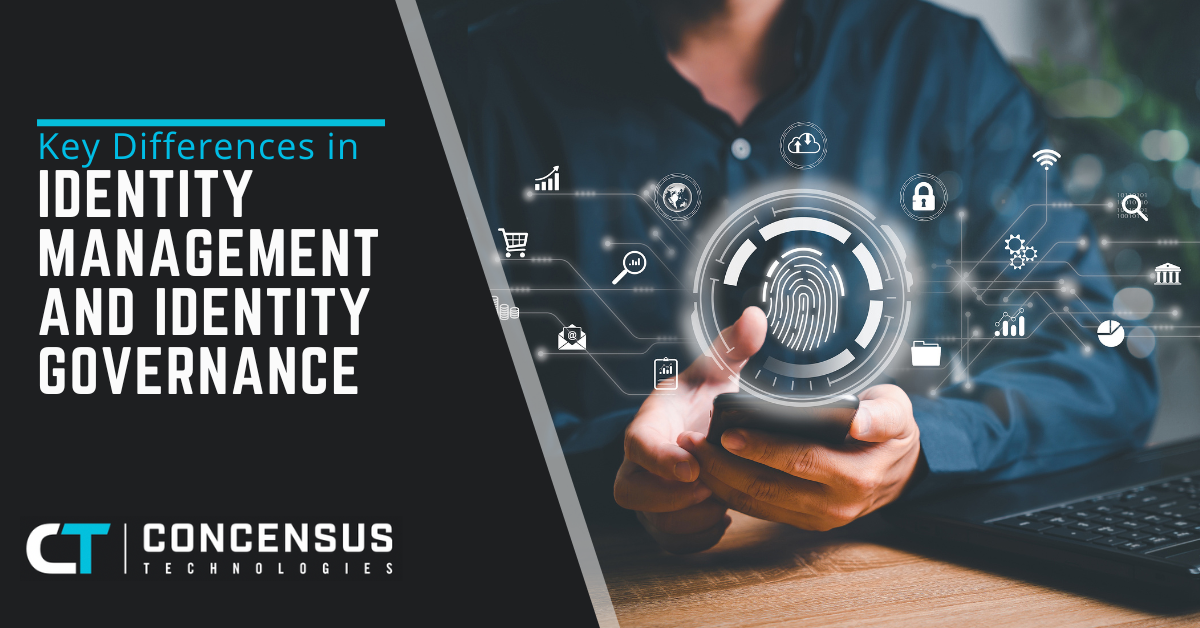
Key Differences in Identity Management and Identity Governance
| May 5, 2023Identity management and identity governance are two important concepts in the realm of cybersecurity. In a world where digital identities are increasingly becoming a key part of our lives, it’s important to have a clear understanding of the differences between these two concepts. This article will tell you all about the key differences between identity management and identity governance and why they are essential for your organization.
What are Identity Management and Identity Governance?
Identity management (IM) is the process of managing the lifecycle of digital identities, including creating, storing, managing, and revoking them. It involves the use of various tools and technologies to ensure that users are authenticated and authorized to access the resources they need to do their jobs. Identity management typically involves the use of directories, such as Active Directory, to store and manage user identities.
Identity governance (IG), on the other hand, is a broader concept that includes identity management but also involves managing the overall governance of identities within an organization. Identity governance involves ensuring that users have the right level of access to the resources they need to do their jobs, while also ensuring that access is appropriately limited to prevent unauthorized access. Identity governance typically involves the use of policies and procedures to ensure that identities are managed in a consistent and secure manner.
What are the Key Differences between Identity Management and Identity Governance?
While identity management and identity governance are related concepts, there are several key differences between them.
Scope
Identity management typically focuses on managing individual digital identities, including creating and managing accounts, authenticating users, and managing access to resources.
Identity governance, on the other hand, takes a broader view and focuses on managing the overall governance of identities within an organization. This includes defining policies and procedures, monitoring access requests, and ensuring compliance with regulations.
Purpose
The purpose of identity management is to ensure that users have the appropriate level of access to the resources they need to do their jobs. This involves ensuring that users are authenticated and authorized to access resources, while also ensuring that access is appropriately limited to prevent unauthorized access.
Identity governance’s purpose, on the other hand, is to ensure that identities are managed consistently and securely across the entire organization. This involves defining policies and procedures, monitoring access requests, and ensuring compliance with regulations.
Tools and Technologies
Identity management typically involves the use of tools and technologies such as directories, single sign-on (SSO), and multi-factor authentication (MFA) to manage user identities and authenticate users. Identity governance uses policies and procedures to manage identities and ensure compliance with regulations. While technology is still an important part of identity governance, it’s not the only focus.
Roles and Responsibilities
Identity management uses IT departments or other technical staff responsible for creating and managing user accounts, authenticating users, and managing access to resources. Identity governance involves a broader set of stakeholders, including business owners, compliance officers, and risk managers, who are responsible for defining policies and procedures and ensuring compliance with regulations.
Why are Identity Management and Identity Governance Important for Business?
Identity management and identity governance are important for businesses for several reasons:
Security
Effective identity management and identity governance are critical for maintaining the security of an organization’s digital assets. By ensuring that users are authenticated and authorized to access resources, organizations can prevent unauthorized access and protect sensitive data from being accessed by malicious actors.
Compliance
Many industries are subject to regulations that require them to manage identities in a secure and compliant manner. Effective identity governance can help organizations ensure compliance with these regulations and avoid costly fines and other penalties.
Efficiency
By ensuring that users have the appropriate level of access to resources, identity management and identity governance can help improve efficiency within an organization. Users are able to access the resources they need to do their jobs without unnecessary delays or roadblocks, which can improve productivity and ultimately benefit the organization as a whole.
Reputation
Security breaches and data leaks can damage a company’s reputation and erode customer trust. Effective identity management and identity governance can mitigate the risk of such incidents, demonstrating to customers and stakeholders that the organization takes security and compliance seriously.
Are You Following Best Practices for Identity Management and Identity Governance?
To ensure effective identity management and identity governance, organizations should follow best practices such as:
Implementing a strong password policy
This includes requiring complex passwords, regular password changes, and multi-factor authentication.
Limiting access to resources
Access should be granted on a need-to-know basis, with privileges being revoked when they are no longer necessary.
Implementing regular reviews and audits
Regular reviews of access privileges can help ensure that users only have access to the resources they need. Audits can help detect and prevent potential security breaches.
Creating and enforcing policies and procedures
Clear policies and procedures should be established for creating and managing user accounts, authenticating users, and managing access to resources. These policies should be communicated to all stakeholders and enforced consistently across the organization.
Protect Your Organization Today
Identity management and identity governance are critical components of a comprehensive cybersecurity strategy. While related, these two concepts have different scopes and objectives and require different tools and technologies.
By implementing effective identity management and identity governance practices, businesses can improve security, compliance, efficiency, and reputation. To learn more about how to implement effective identity management and identity governance in your organization, contact Concensus Technologies today for expert guidance.

